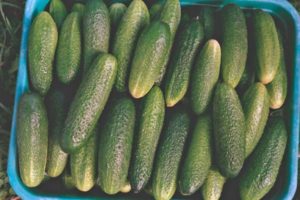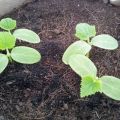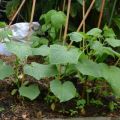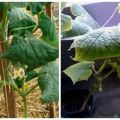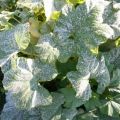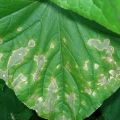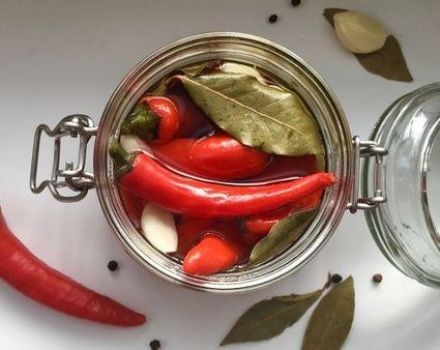Description of the Lilliput cucumber variety, its characteristics and yield
Self-pollinated varieties are convenient in the sense that their yield depends little on weather conditions and the presence of pollinating insects. These include the Lilliput cucumber. In addition to its high yield, the variety has excellent taste characteristics that satisfy even the most fastidious gardeners.
Description of the variety
The Lilliput cucumber bears fruit 1.5 months after the first shoots appear. The height of the bush is average. Peduncles of the female type. About 3 ovaries are formed in each node. The length of the Lilliput fruit reaches 9 centimeters, and the weight does not exceed 90 grams. The shape is cylindrical, the tubercles are not pronounced, the color is uniform, green.
The yield of the Lilliput variety is high. The description of the variety says that more than 10 kg of fruits are harvested from one square meter of land, which are suitable for long-term storage, retain their commercial qualities and tolerate transportation well.
Main advantages and disadvantages
Lilliputian f1 has advantages that distinguish it favorably over its competitors:
- self-pollinated variety;
- peduncles of the female type;
- universal use of the harvested crop (consumed fresh or used for all types of processing and conservation);
- fruits begin to form very early;
- high productivity;
- excellent taste;
- cucumbers store well and tolerate transportation;
- determinant shoots are formed;
- high resistance to major diseases.
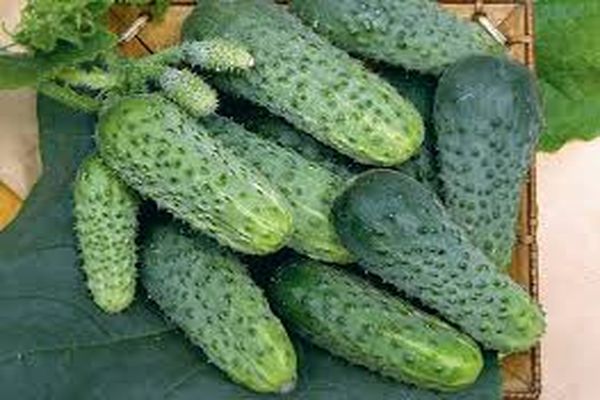
The characteristics of the variety do not allow revealing significant shortcomings. No supernatural effort is required to harvest.
Growing features
The Lilliput variety, like any hybrid, does not like sour, waterlogged and heavy soil. A sufficient amount of organic fertilizers is required. If the groundwater is located close to the site, then it is necessary to make bulk ridges up to half a meter high, consisting of fertile soil. Reviews of experienced gardeners indicate that not only rotted manure is used as fertilizer for growing cucumbers, but also fallen leaves, sawdust or grass mowing.
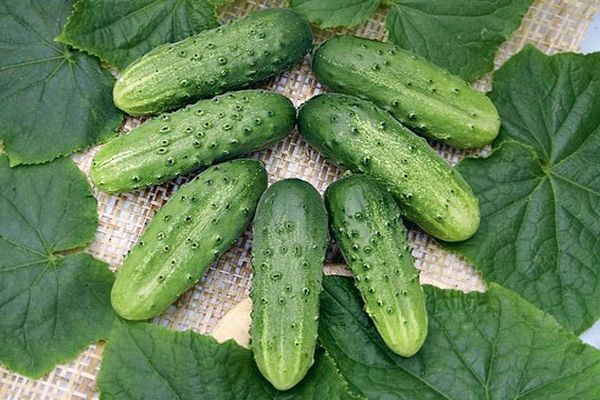
Plants are grown not only by sowing seeds in open ground, but also by seedlings. Seedlings are sown in the last decade of April.
After a couple of weeks, young plants are already relocated to a permanent place of growth. The distance between the bushes is left at least half a meter.
Cucumbers are sown in open ground only when the threat of night spring frosts has completely passed. The soil warms up well by this time. The sowing depth is 2 cm. It is convenient to grow Lilliputius on trellises, since this is how the greens are visible and you can harvest without problems. With this method, watering, weeding and weed control becomes convenient.
Lilliputian cucumbers do not react well to temperature changes, therefore, it is better to allocate beds for their cultivation, protected from drafts, without direct sunlight. Irrigation of plants is carried out using a spray bottle, but drip irrigation is an ideal option. For feeding cucumbers, wood ash is used, as well as phosphorus fertilizers. Mulching allows you to reduce the number of weeds on the site and avoid drying out the soil.
Lilliput is a godsend for those summer residents who can be in the garden only on weekends. You can enjoy the grown cucumber even under unfavorable climatic conditions. The quality of the crop and market characteristics are not affected. Gherkins are canned or immediately used for making salads. The variety of early cucumbers Lilliput also surprises with the high taste of the harvested crop. Thin and crispy greens will not leave anyone indifferent.
